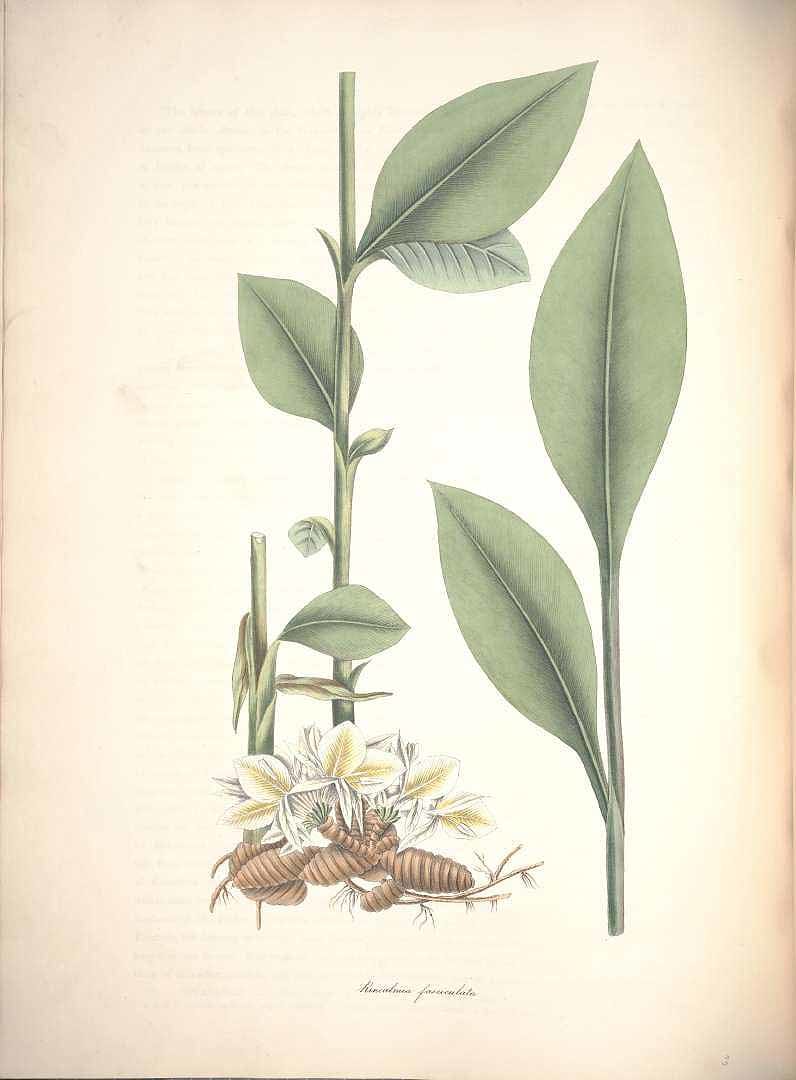Amomum krervanh, Bai Dou Kou 白豆蔻
Round Cardamon, Cluster Cardamon, Java CardamonBai Dou Kou (TCM)
Khemama (Unani)
 Amomum compactum
Amomum compactumRoscoe, W., Monandrian plants of the order Scitamineae (1854)
Botanical name:
Amomum krervanh (A. kravanh), A. compactum
Parts used:
Fruit
Temperature & Taste:
Warm, dry. Pungent, Aromatic
Classification:
J. Aromatics that Resolve Dampness
Uses:
1. Moves Qi, Strengthens the Stomach, Clears Damp:
-Dampness blocking Stomach with Nausea, Poor appetite, fullness in the Chest and Epigastrium
-can be used for Damp with either Cold or Heat
2. Warms the Stomach, Stops Rising Qi:
-Belching and Vomiting with Spleen and Stomach weakness, with Cold, Damp and/or Food Stagnation
3. Clears Cold-Phlegm, Stops Cough:
-Qi and Phlegm obstruction in the Chest with Cough, Wheezing, stifling sensation in the Chest
Dose:
Decoction: 3–6 grams
Powder: 500mg–2 grams
Substitute:
The Chinese call Cardamon (Elettaria) “Lu Dou Kou” (Green Dou Kou) while Amomum krervanh is called “Bai Dou Kou” (White Dou Kou). They are similar in effect.

Main Combinations:
1. Stomach Damp:
i. with Poor appetite and Digestion and fullness in the Chest and Epigastrium, Amomum Bai Dou Kou with Amomum Sha Ren
ii. with fullness, discomfort in the chest and abdomen, nausea, diarrhea with Stomach weakness and Damp, Amomum Bai Dou Kou with Citrus Chen Pi.
2. Heat and Damp affecting the Stomach, Amomum Bai Dou Kou with Scutellaria Huang Qin
3. Nausea and Vomiting:
i. Amomum Bai Dou Kou with Clove
ii. Amomum Bai Dou Kou with fresh Ginger
iii. with Cold-Damp or Food Stagnation, Morning Sickness, Amomum Bai Dou Kou with Agastache Huo Xiang and Pinellia Ban Xia.
iv. vomiting of Milk in babies, Amomum Bai Dou Kou with Amomum Sha Ren and Licorice as a powder
Cautions:
Not used in Yin or Blood deficiency.
